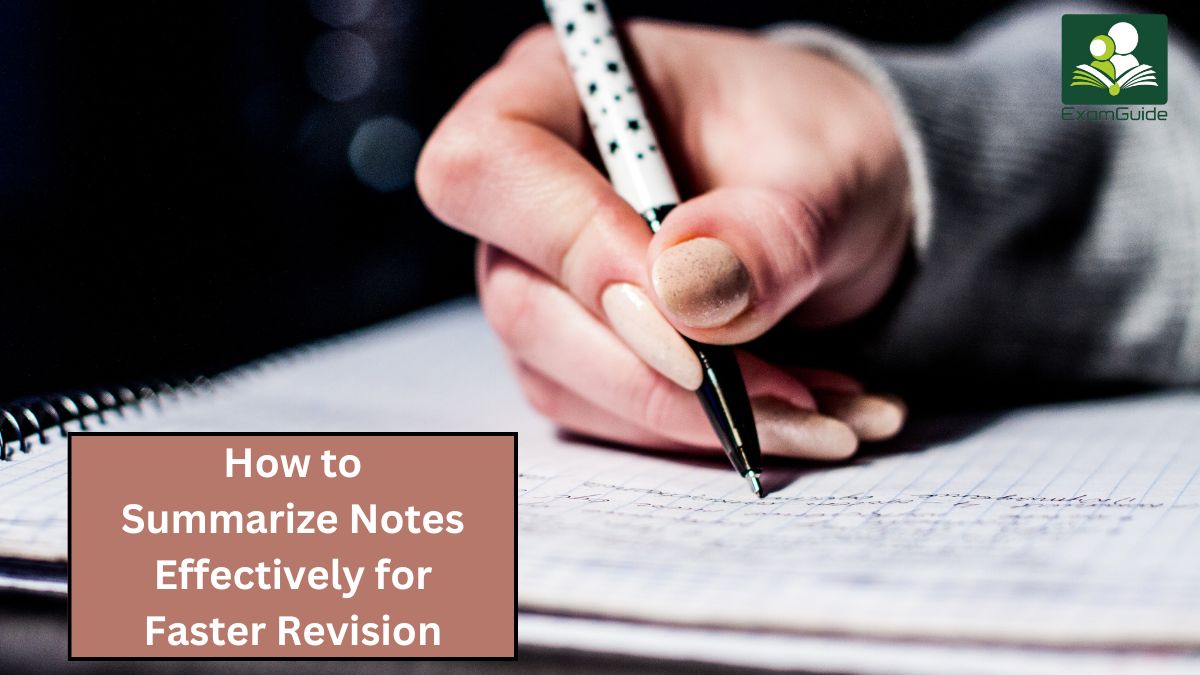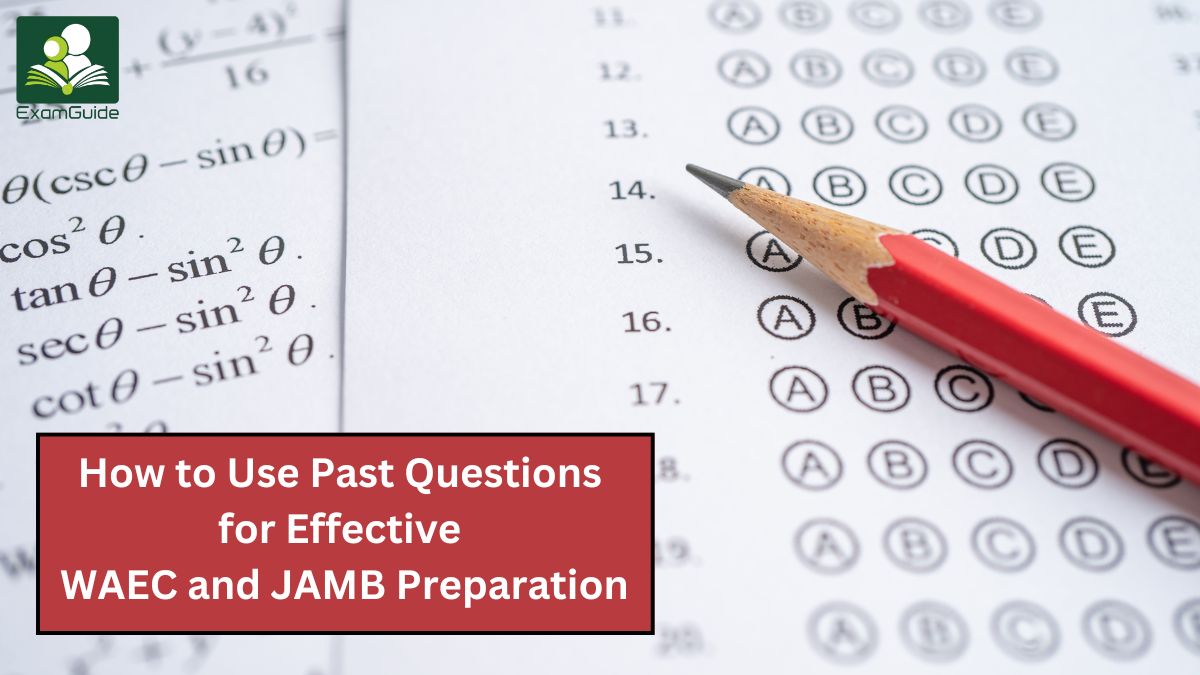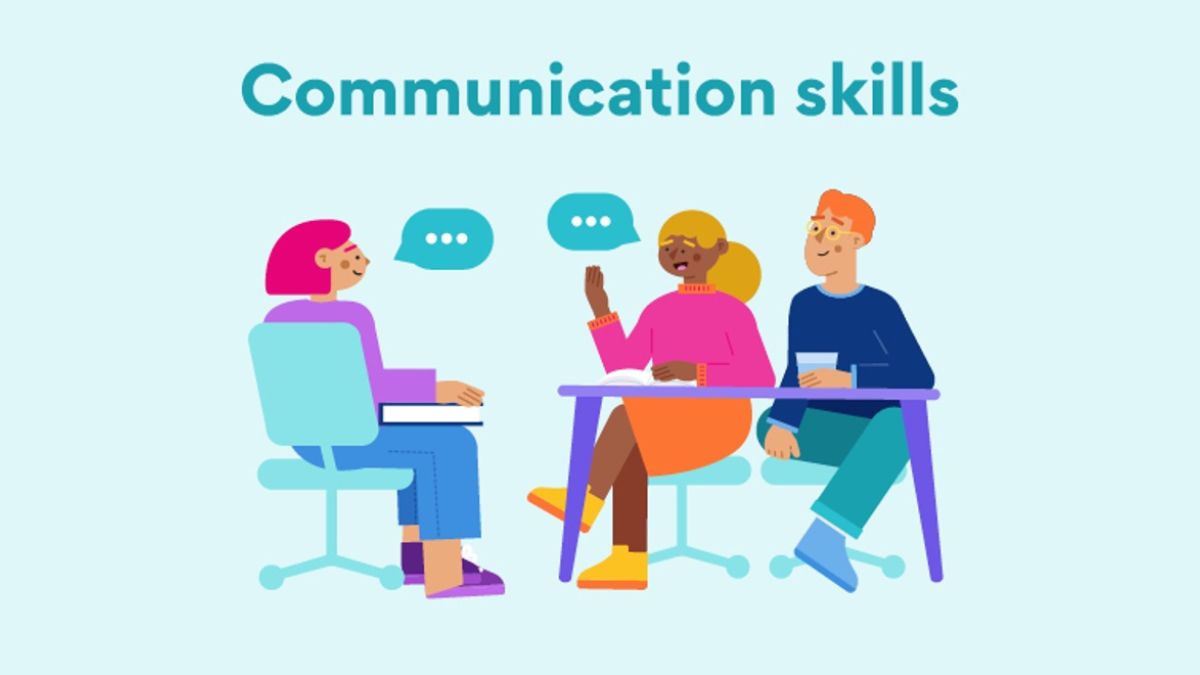
How to Summarize Notes Effectively for Faster Revision
Summarizing notes is one of the most powerful strategies for studying effectively and efficiently. It enables students to condense large amounts of information into concise, easy-to-review formats, making revision faster and more effective.
In this article, we will explore the key techniques for summarizing notes, how to make them actionable for your exam preparations, and how to use them to ensure better retention.
Table of Content
Why Summarizing Notes is Crucial
How do I know which information is important to include in my summary?
Steps to Summarize Notes Effectively
Tips for Maintaining Effective Summaries
Why Summarizing Notes is Crucial
Summarizing helps you focus on key points, filter out unnecessary details, and consolidate your understanding of the subject. It also makes it easier to review essential topics in a shorter amount of time.
Effective summaries allow you to refresh your memory without having to read through pages of notes, and they improve the clarity of concepts by breaking down complex information into simpler chunks.
How do I know which information is important to include in my summary?
To know which information is important to include in your summary, consider the following tips:
1. Focus on Key Concepts
- Look for the central themes and ideas that form the foundation of the subject. For example, in a history lesson, focus on the main events, causes, and effects rather than on minor details.
2. Highlight Definitions and Key Terms
- Definitions, formulas, and key terms are usually the core of any subject. Make sure you include them in your summary to ensure you have a solid understanding of the subject.
3. Identify Main Ideas and Supporting Details
- Every lesson has a few main points supported by additional details. Summarize the main points and choose the most essential supporting details that clarify or explain the main ideas.
4. Pay Attention to Emphasis in Class
- Take note of the concepts your teacher emphasizes during lessons or those that appear repeatedly in textbooks or study materials. These are usually significant and may be tested in exams.
5. Use Past Exam Questions as a Guide
- Reviewing past exam papers or practice questions can give you a sense of which topics are frequently tested. Focus on summarizing these areas in greater detail.
6. Look for Visual Aids
- Diagrams, charts, and tables often represent key concepts. Summarize these visuals or use them as part of your summary to simplify complex ideas.
7. Eliminate Unnecessary Information
- Avoid including too much detail, anecdotes, or examples that don't directly contribute to understanding the main points. Your summary should be concise but comprehensive.
Steps to Summarize Notes Effectively
- Review and Organize Your Notes
- Why: Before you start summarizing, ensure that your notes are organized and easy to follow. This will prevent confusion later and allow you to focus on the most important points.
- How: Go through your entire set of notes to check for any gaps in information. Highlight or underline important points, definitions, and concepts. Ensure that each topic has its own section, and the sub-topics are well-organized.
- Identify Key Information
- Why: To summarize effectively, you need to know which information is crucial and which can be omitted.
- How: Identify the main ideas, critical concepts, formulas, and important dates or events. Eliminate extraneous details that do not directly contribute to the core of what you need to know for the exam.
- Use Bullet Points for Clarity
- Why: Bullet points make it easier to break down complex information into digestible parts.
- How: Rewrite your notes using bullet points, focusing only on the most important information. For example, instead of writing long paragraphs, list out definitions, formulas, and key points that are crucial for understanding the topic. Bullet points also allow you to quickly skim and find relevant details during revision.
- Create Diagrams and Visual Aids
- Why: Visual aids like mind maps, flowcharts, and diagrams help reinforce memory by connecting information in a visual format.
- How: Convert complex information into diagrams. For instance, use mind maps to show relationships between concepts or flowcharts to outline processes. Visual aids help in quickly revising topics and improving memory recall during exams.
- Use Abbreviations and Symbols
- Why: Using shorthand makes note-taking faster and more efficient.
- How: Develop your own system of abbreviations and symbols. For example, use "→" for cause and effect, "+" for additions, and "≈" for approximately. While summarizing, replace long phrases with abbreviations that you’ll easily remember. This will make reviewing faster without losing any important meaning.
- Highlight Essential Definitions and Formulas
- Why: Key definitions and formulas are often the backbone of many subjects. Revising them is critical to solving problems in exams.
- How: In your summary, make sure to separate key definitions and formulas into their own section or highlight them in bold or a different color for easy access. Ensure you understand their application and how they relate to other concepts.
- Condense Paragraphs into Short Sentences
- Why: Long paragraphs can be overwhelming. Condensing information into short, simple sentences makes it easier to digest.
- How: After reading through each paragraph in your notes, rewrite it in one or two sentences, focusing on the core idea. Keep it short and direct, removing unnecessary details and explanations.
- Group Similar Concepts Together
- Why: Grouping related concepts helps you see the bigger picture and identify patterns across topics.
- How: Categorize related concepts together. For example, if you're studying biology, group all the topics related to cell functions together and those related to genetics separately. This helps you visualize connections between different areas of study, which aids retention.
- Create Practice Questions from Your Notes
- Why: Creating questions from your notes turns your summary into an active revision tool.
- How: After summarizing, try turning the key points into possible exam questions. For example, if you summarized a historical event, turn the key facts into questions like, "What caused the event?" or "What were the major outcomes?" This will make your revision more interactive and help identify areas that require further focus.
- Review and Refine Your Summaries
- Why: Sometimes, your first summary might not be as clear as it could be. Refining it ensures that it’s both concise and complete.
- How: After summarizing, go over your notes to ensure everything important has been included. Check for any mistakes or omissions and refine the summary to make it more concise or clearer. Ensure you can understand the summary without additional context.
Tips for Maintaining Effective Summaries
- Stay Consistent: Develop a consistent summarizing style so that you can easily follow your summaries across different subjects.
- Use Color-Coding: Use different colours to highlight important concepts, definitions, and examples for quicker reference.
- Review Regularly: Make a habit of reviewing your summaries every week. This will help you retain the information and reduce the need for last-minute cramming.
- Collaborate with Study Groups: Sharing summaries with study groups can offer new perspectives and help fill in any gaps you might have missed.
- Keep It Simple: Avoid overcomplicating your summaries. The simpler, the better! Stick to the most relevant and important details.
Conclusion
Summarizing notes effectively is a key to mastering your revision and ensuring you're ready for your exams. By following the steps outlined above, you can create organized, concise, and meaningful summaries that enhance your learning and save you time.
With well-prepared notes, you can confidently approach your studies, retain important information, and excel in your exams.
Frequently Asked Questions
Why is summarizing notes important for revision?
Answer:
Summarizing notes helps students condense large amounts of information into manageable, easy-to-review formats. It allows for better focus on key points, aids in the retention of essential information, and makes revision more efficient by reducing the time spent reviewing entire chapters or lectures.
What should I do if I don’t understand something while summarizing?
Answer:
If you don’t understand a concept while summarizing, take the time to revisit the material and clarify your understanding. Look for additional resources such as textbooks, online tutorials, or ask a teacher or classmate for assistance. Once you understand the concept, summarize it in your own words to reinforce your learning.
Can I use technology to help summarize my notes?
Answer:
Yes, technology can be very helpful in summarizing notes. There are several note-taking apps and software like Microsoft OneNote, Evernote, or Notion that allow you to organize and summarize your notes digitally. Some tools also offer the ability to add diagrams, voice notes, and links to make the revision process more efficient.
How often should I review my summaries?
Answer:
Review your summaries regularly, ideally every week, to reinforce what you’ve learned. The more you revisit and revise your notes, the stronger your memory retention will be. Regular review ensures that information remains fresh and allows you to identify areas that need more attention.
Can summarizing my notes help me prepare for exams faster?
Answer:
Yes, summarizing your notes is one of the best ways to prepare for exams efficiently. It helps you focus on the key areas of each subject, which reduces the time spent on revising entire chapters. Summaries allow you to quickly go over important points, helping you retain information more effectively and with less effort.
No comment found
Related Posts

Top 20 Motivational Quotes for Students to Work Hard

How to Use Past Questions for Effective WAEC and JAMB Preparation

Language barriers in Nigerian Education and how to Overcome them

How to Excel in Mathematics: Tips for Nigerian Students

Effective Communication Skills Every Student Should Learn


